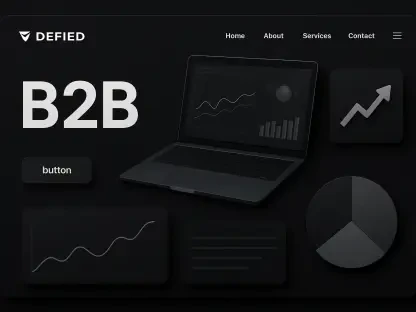Setting the Stage for OOH’s Digital Revolution
In an era where nearly half of Gen Z is consciously cutting back on screen time to embrace real-world experiences, out-of-home (OOH) advertising is experiencing a remarkable resurgence. This historically visibility-driven medium, once reliant on static billboards and manual processes, is undergoing a profound transformation through the integration of Artificial Intelligence (AI) and supporting technologies like Application Programming Interfaces (APIs). The shift comes at a critical juncture, as traditional advertising channels falter and online platforms grapple with privacy concerns, positioning OOH as a compelling alternative for brands seeking tangible impact.
This review explores how AI and APIs are not just modernizing OOH but redefining it as a data-driven, intelligent advertising tool. Amidst a broader media landscape where agility and insight are paramount, the stakes are high for advertisers to adapt. The focus here is on the core capabilities of these technologies, their real-world applications, and the challenges that accompany their adoption in reshaping one of the oldest forms of advertising.
Core Features and Performance of AI and APIs in OOH
APIs: Automating the Backbone of OOH Campaigns
At the heart of OOH’s digital evolution lies the role of APIs, which are replacing outdated, manual processes with seamless automation. Traditional media buying, often bogged down by cumbersome request-for-proposal systems, now benefits from real-time access to inventory, pricing, and performance data through API integration. This shift drastically reduces campaign launch times, enabling advertisers to move from weeks of planning to near-instantaneous execution, while providing transparency that benefits both media owners and brands.
The efficiency brought by APIs extends beyond speed, streamlining workflows through unified interfaces. Advertisers gain unprecedented control over their campaigns, while media owners can shift focus from administrative burdens to strategic priorities. This technological backbone is essential for laying the groundwork for more advanced tools, ensuring that data flows smoothly to power deeper insights and innovation.
AI: Unleashing Analytical Precision in OOH Planning
Complementing API automation, AI introduces a level of analytical power that transforms OOH planning into a science of precision. By processing vast datasets, AI identifies patterns, forecasts campaign performance, and recommends optimal ad placements with a speed that manual methods cannot match. This capability allows for strategic decisions that are both proactive and informed, elevating the effectiveness of advertising efforts in the physical world.
Beyond placement optimization, AI holds the promise of predicting return on investment and pinpointing high-impact locations tailored to specific audiences. For brands leveraging modern infrastructure, this technology offers a competitive edge, turning OOH into a medium that rivals digital platforms in measurability. The synergy of AI with automated systems marks a turning point, making OOH a smarter choice for advertisers navigating a crowded marketing landscape.
Real-World Impact and Applications
The practical deployment of AI and APIs in OOH campaigns showcases their transformative potential across diverse industries. From retail to automotive, brands are using these tools to streamline workflows, with automated systems cutting down on planning delays and providing granular control over ad placements. Case studies reveal how data-driven insights have led to campaigns that resonate more effectively with target demographics, maximizing visibility in key urban corridors.
Media owners, too, are reaping benefits as automation frees up resources for strategic innovation rather than repetitive tasks. AI-driven analytics have been instrumental in optimizing inventory usage, ensuring that high-value spaces are utilized to their fullest potential. These real-world examples underline the shift toward a more responsive and measurable OOH ecosystem, where technology empowers stakeholders at every level.
Challenges in Adoption and Implementation
Despite the promise of AI and APIs, the path to widespread adoption in OOH is not without obstacles. A primary challenge lies in the need for clean, connected data as a prerequisite for effective AI deployment. Without robust data infrastructure, the insights generated risk being incomplete or misleading, posing a hurdle for organizations still reliant on fragmented systems.
Additionally, integration costs and technical complexities can deter smaller players from embracing these advancements. Resistance to change within the industry further complicates the transition, as legacy mindsets clash with the demands of a digital-first approach. Efforts are underway to address these barriers, with initiatives focused on scalable solutions and accessible platforms to democratize access to cutting-edge tools.
Looking Ahead: The Future of OOH with AI
As AI and API technologies continue to evolve, their trajectory in OOH advertising points toward groundbreaking possibilities. Predictive analytics could soon reach new heights, enabling hyper-personalized targeting that adapts to real-time audience behaviors in physical spaces. Such advancements would further blur the lines between digital precision and OOH’s traditional scale, creating a hybrid medium of immense potential.
The long-term vision involves a redefinition of OOH’s role within the advertising ecosystem, where its inherent reach is amplified by digital efficiency. From 2025 to 2027, industry experts anticipate a surge in adoption as costs decrease and integration becomes more seamless. This evolution positions OOH not just as a complementary channel but as a cornerstone of modern marketing strategies for brands seeking impact and intelligence in equal measure.
Final Thoughts and Next Steps
Reflecting on this technological review, it is evident that AI and APIs have already begun to reshape out-of-home advertising into a formidable force by enhancing speed, measurability, and strategic depth. Their implementation has demonstrated tangible benefits, from streamlined operations to optimized campaign outcomes, marking a pivotal shift in how brands connect with audiences in the physical world.
For stakeholders looking to capitalize on these advancements, the next steps involve investing in robust data infrastructure and fostering a culture of adaptability to overcome integration challenges. Exploring partnerships with technology providers could also accelerate the adoption of scalable solutions, ensuring that OOH remains a vital tool in an ever-changing market. As the landscape continues to evolve, staying ahead means embracing these innovations to blend visibility with actionable insights, securing a competitive edge for the future.









